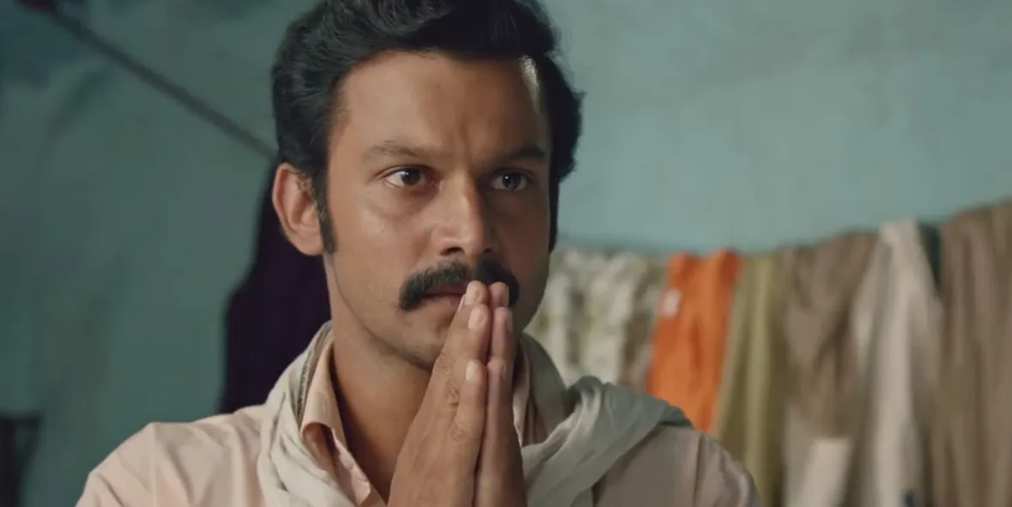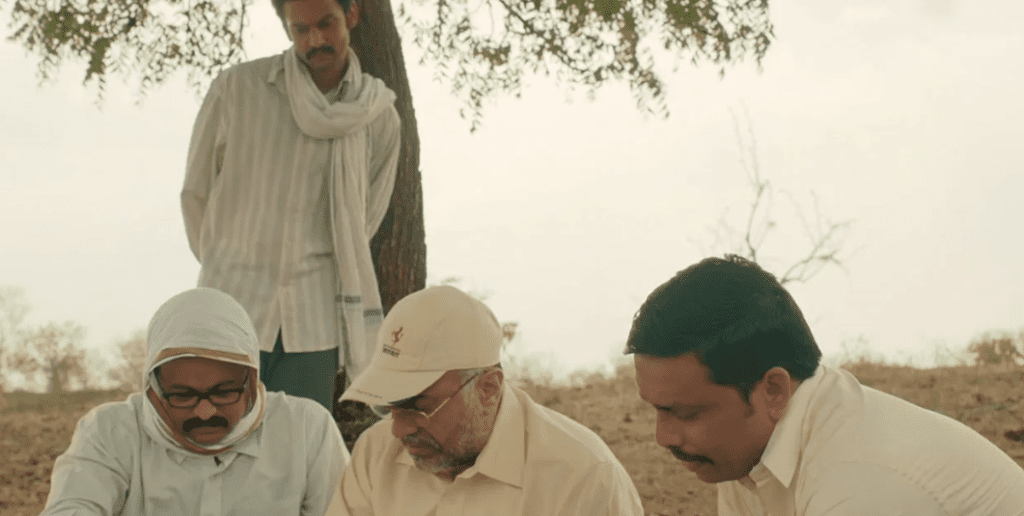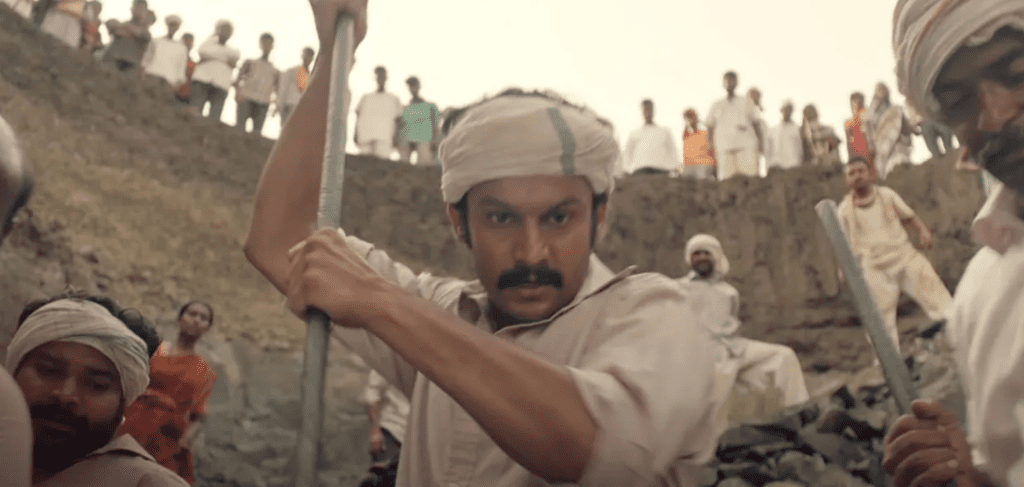Paani Movie Review: A Dated Drama on the Water Crisis That Struggles to Make a Splash
In a world where water scarcity is a pressing issue, the Marathi film Paani attempts to shed light on the topic but stumbles in its execution. Directed by Adinath Kothare, who also plays the lead, the movie tackles the challenges faced by villages dealing with a water crisis. While the theme of Paani is undoubtedly relevant, the film’s approach feels outdated, and it struggles to leave a lasting impression. Let’s dive into a detailed review of Paani its plot, performances, technical aspects, and why it falls short of expectations.

Plot Overview: A Struggle to Solve the Water Crisis
The story of Paani revolves around Hanumant Kendre (played by Adinath Kothare), a young man from a village in Maharashtra that’s battling a severe water crisis. At the beginning of the film, Hanumant is searching for a bride, and he finds a suitable match in Suvarna (played by Rucha Vaidya). However, the marriage is called off by Suvarna’s parents due to the village’s water scarcity a situation that Hanumant previously ignored, despite his elder brother’s pleas for action.
The turning point in the film occurs when Hanumant decides to tackle the water problem after realizing that his personal life is affected by it. In his journey to solve the issue, Hanumant faces opposition from the local villain, Tatya (played by Kishore Kadam), and the political agendas that aim to stop him from achieving his goal.

Although the story revolves around an important social issue, the execution lacks depth. The narrative feels stuck in a loop, focusing on the water crisis, Hanumant’s romantic entanglement, and his battle against opposition. Unfortunately, it fails to offer a fresh perspective or add layers of complexity, making the plot predictable and uninspiring.
Performances: Strong Actors Held Back by Weak Writing
One of the few redeeming qualities of Paani is its cast. Adinath Kothare brings authenticity to the role of Hanumant, especially with his attention to the Marathwada accent. He portrays the character’s transformation from a disinterested villager to a man determined to solve the water crisis with sincerity. However, the lack of character development hampers his performance, making it difficult for viewers to connect emotionally with Hanumant’s journey.
Rucha Vaidya, as Suvarna, fits perfectly into the role of a village girl. Her natural, non-glamorous appearance and performance add a touch of realism to the film. But her character arc lacks progression. After waiting nearly nine years for Hanumant, Suvarna doesn’t seem to undergo any noticeable change in maturity, costume, or behaviour, leaving her character feeling static.

Kishore Kadam, who plays the antagonist Tatya, brings intensity to his role, but the film never explains his motivations clearly. What does Tatya gain by stopping the water from reaching the village? This crucial plot point remains unresolved, making his character seem one-dimensional.
The supporting cast, including Subodh Bhave (in a cameo role), performs admirably, and the villagers played by the ensemble cast add authenticity to the setting. Despite the flawed screenplay, the actors do their best to elevate their characters, but they’re ultimately limited by weak writing.
Script and Direction: A Dated Approach to a Timely Issue
The script of Paani, written by Nitin Dixit, is simplistic and lacks the layers needed to make the film compelling. The focus on a few repetitive themes water scarcity, Hanumant’s marriage, and the villain’s interference makes the narrative feel monotonous. The film stretches over two hours, but it barely scratches the surface of the water crisis or the characters’ emotional struggles.
The direction by Adinath Kothare shows glimpses of potential, but his inexperience in handling such a sensitive subject matter is evident. While the water crisis is an urgent and important issue, Kothare’s storytelling approach feels outdated, resembling a television drama rather than a cinematic experience. The film’s pacing is slow, and several scenes feel half-baked or incomplete, leaving viewers unsatisfied.
Technical Aspects: Mixed Bag of Strengths and Weaknesses
Despite its shortcomings in storytelling, Paani does have a few technical strengths that deserve mention.
Cinematography and Visuals
The cinematography by Rajit Kapur beautifully captures the rural landscape of Maharashtra. The vast, parched lands and dusty roads emphasize the severity of the water crisis, and certain scenes are visually striking. Kapur’s work behind the camera adds meaning to the film’s context, even when the script falls short.
Sound Design
One of the standout elements of Paani is its sound design, which effectively enhances the viewing experience. The sound of dry winds, parched earth, and distant water sources creates an immersive environment, making the audience feel the desperation of the villagers.
Music
Unfortunately, the music by Toofan Alaya fails to leave a mark. The soundtrack doesn’t contribute much to the film’s emotional depth, and the songs feel like an afterthought. The background score is serviceable but forgettable, which is a missed opportunity given the emotional potential of the story.
A Missed Opportunity: Where Paani Falls Short
The biggest issue with Paani is its inability to explore the water crisis in a meaningful way. The film sets up the premise of a village suffering from water scarcity but never delves into the systemic causes of the issue. Instead, it focuses on Hanumant’s personal journey, which is muddled with unnecessary romantic subplots and a weak antagonist.
The screenplay lacks urgency, which is ironic given the critical nature of the water crisis. Scenes drag on without adding much to the narrative, and many moments feel repetitive. The film misses the opportunity to explore the broader impact of water scarcity on the community or to present a more nuanced portrayal of the social and political factors at play.
Moreover, the film’s tone feels outdated, as if it belongs in a different era of filmmaking. While the subject matter is relevant, the execution feels like a throwback to melodramatic TV serials, which detracts from the seriousness of the issue.
A Drama That Fails to Make Waves
In the end, Paani is a film that had the potential to make a significant impact but falters due to its weak script, lack of depth, and dated presentation. Despite strong performances from the cast and a few technical achievements, the film doesn’t do justice to the important issue it aims to address. The water crisis is a critical topic, especially for rural communities in Maharashtra, but Paani fails to capture the urgency and complexity of the situation.
If you’re looking for a film that tackles social issues with depth and nuance, Paani might leave you disappointed. It’s a story that should have flowed with the power of a river but instead trickles along like a drying stream.
FAQs
1. What is Paani about? Paani is a Marathi drama centered around a village dealing with a severe water crisis. The film follows Hanumant Kendre as he tries to solve the water shortage in his village while facing opposition from local forces.
2. Who directed Paani? The movie is directed by Adinath Kothare, who also plays the lead role of Hanumant Kendre.
3. What is the main theme of Paani? The main theme of the film revolves around water scarcity and how it affects the lives of villagers. The movie also touches on personal relationships and social opposition.
4. How is the performance of the lead actors in Paani? Adinath Kothare delivers a sincere performance, while Rucha Vaidya brings a natural charm to her role. However, the weak writing and lack of character development limit their performances.
5. Is Paani worth watching? While Paani has its moments, the overall execution is slow-paced and lacks the emotional depth required to make a significant impact. It may appeal to those interested in social issues, but it falls short in delivering a compelling narrative.





